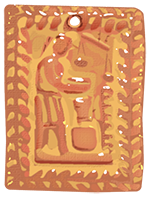 |
|
This little Nicodemus ornament has a family connection. |
|||
|
Chester Nicodemus, 1901–1990, was an Ohio potter. He taught at the Columbus Art School from 1930 to 1941 when he became a full-time artist. A home studio and showroom neighbor describes him as a "kind, quiet man." |
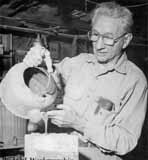 |
||||
| My aunt Ellen Jennings was first his student and then his protégé at his pottery. She designed many small animal sculptures in the arts and crafts tradition. |
|||||
| The sculptures she made were turned into molds, then cast in a local clay and fired in Nicodemus's hand-built kilns. The distinctive Nicodemus glazes were added, then the sculptures were fired again. The iron-rich clay they're made of has a warm, reddish color that shows through the glaze, resulting in rich surface shades. (Except for her polar bears, which were made of white clay.)
All Nicodemus molds and glazes were destroyed when he died, but some of his sculptures, and those of Ellen Jennings, can be found online. |
|||||
My siblings and cousins inherited collections of Ellen's sculptures. My daughter calls them "the family jewels." We sometimes give them to very treasured friends, but have hung on to most.
The sizes of the sculptures range from 2 to 5 inches tall.
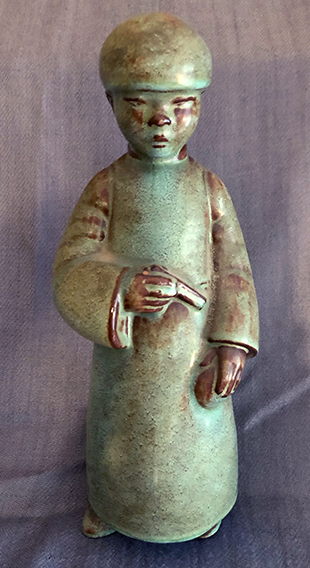 Ellen made sculptures in a variety of other media. These were generally human figures. However, I believe this Chinese boy is her only human Nicodemus piece. It's also larger than others, about 10 inches tall.
Ellen made sculptures in a variety of other media. These were generally human figures. However, I believe this Chinese boy is her only human Nicodemus piece. It's also larger than others, about 10 inches tall.
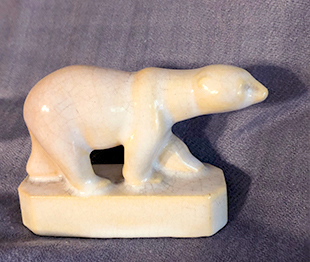
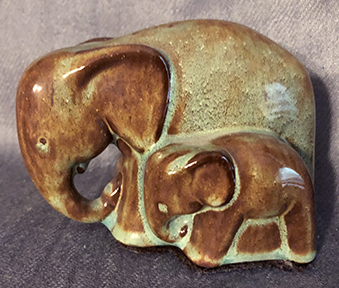
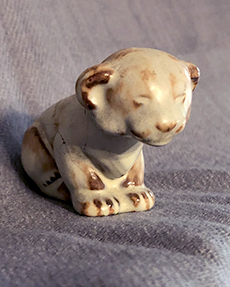 |
 |
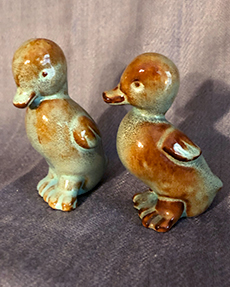 |
 |
|||
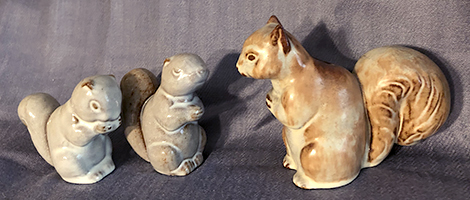 |
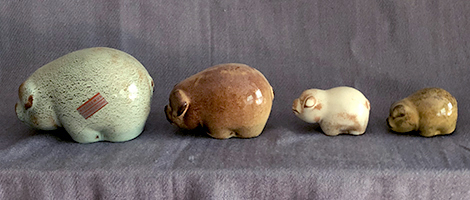 |
|||||
Some of the sculptures are utilitarian: bookends, a bank, "cactus planters" that have held everything from hairpins to toothpicks. |
||||||
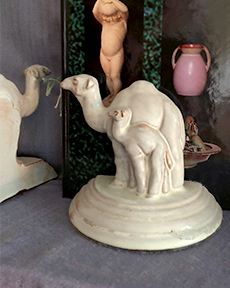 |
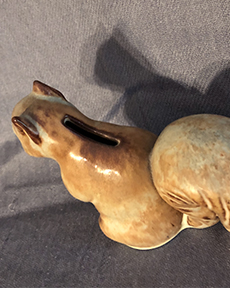 |
 |
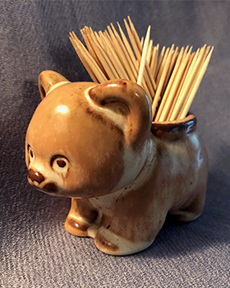 |
|||
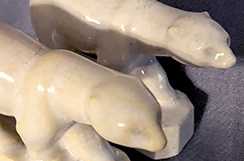 |
Multiple copies of the sculptures were made from the molds, but the glazes make each piece unique. Not only were different glaze colors used, but the thickness of the glaze changes the amount of detail held and the amount of underlying clay color that shows through. | |||||
 |
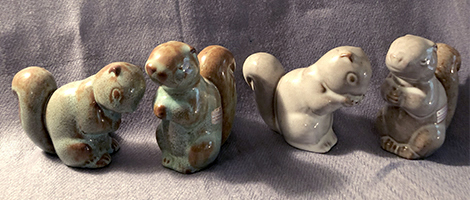 |
|||||
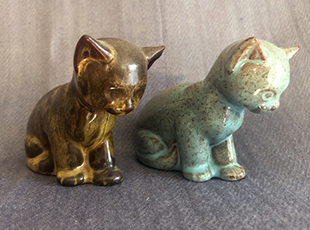
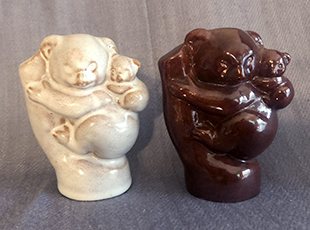
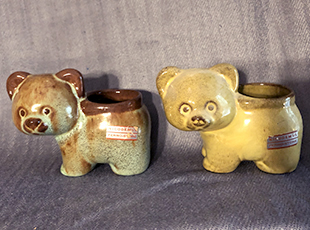
When my father was in an army band in World War II, he was walking down Fifth Avenue in New York one day, feeling homesick and discouraged.
He glanced in a high-end jeweler's window and there, snuggled among the gold and gems, were his sister's animals.
I had a pale version of this sensation when I was visiting my sister in Ohio one time and found them for sell at the Columbus Museum of Art.
Sadly, Ellen died before I was born. She suffered a head injury that made her an invalid: during this period she worked on tiny sculptures on a board on her lap. These pieces were not molded, each is completely unique.
Ellen suddenly passed away at 33 years old.
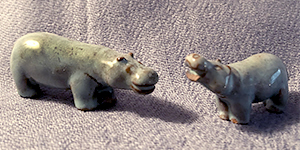
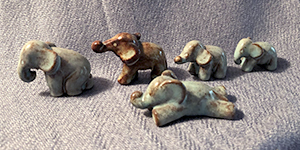

Ellen's animals are tokens that embody the paternal half of my family. The bear with the cigar is my grandfather, Pop. The bear mother is carrying my brother.
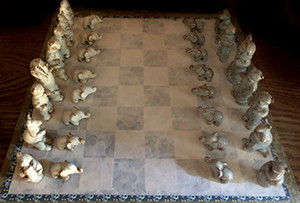

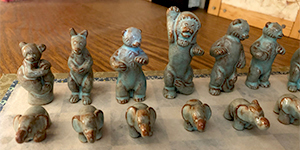
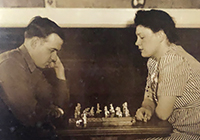
I never understood why Ellen made elephants the pawns in her chess set, but the back row is perfect, if you ask me.
Based on their body language it looks like Mother is doing very well, making my father think hard.
|
Regrets |
||||||||||
|
||||||||||
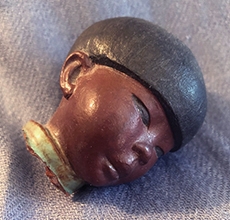 |
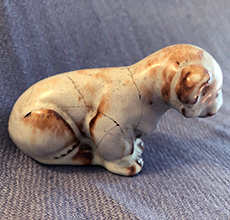 |
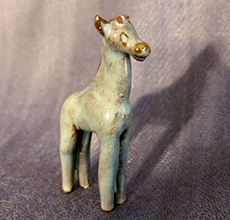 |
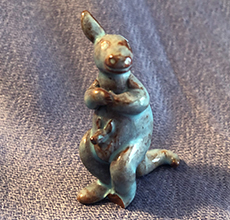 |
|||||||
